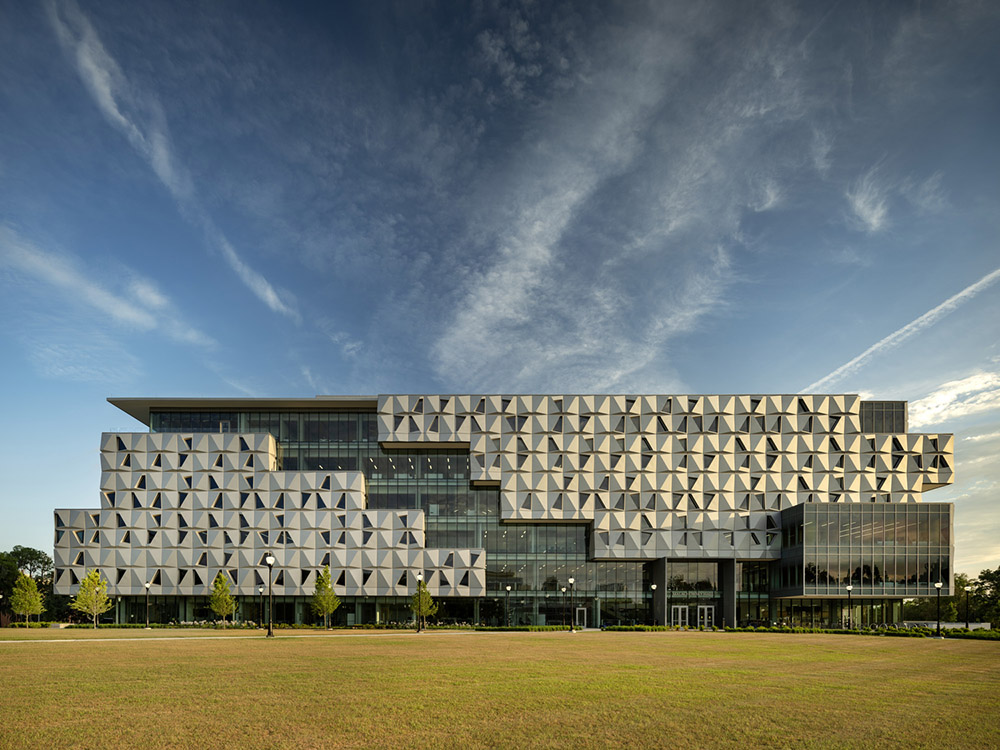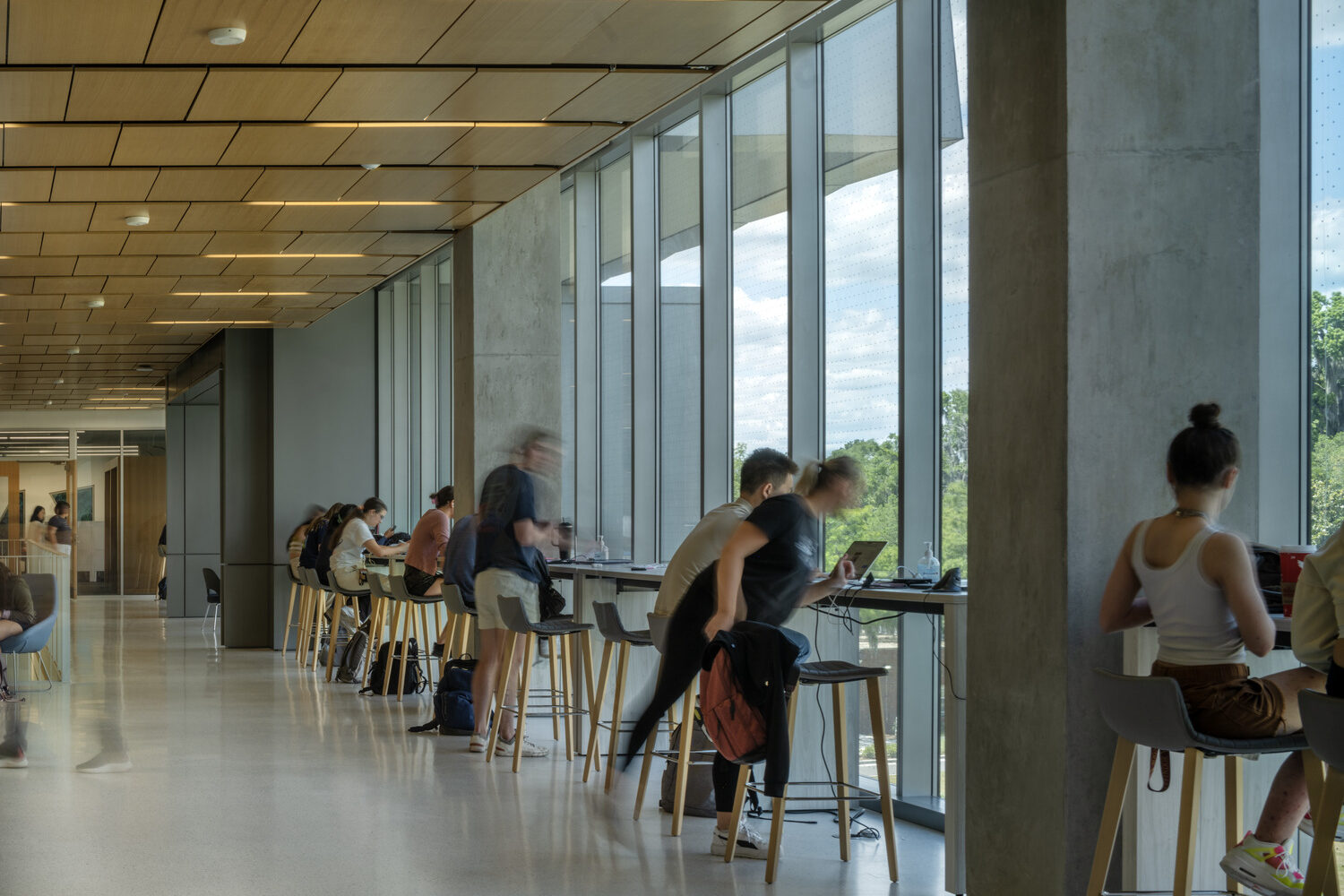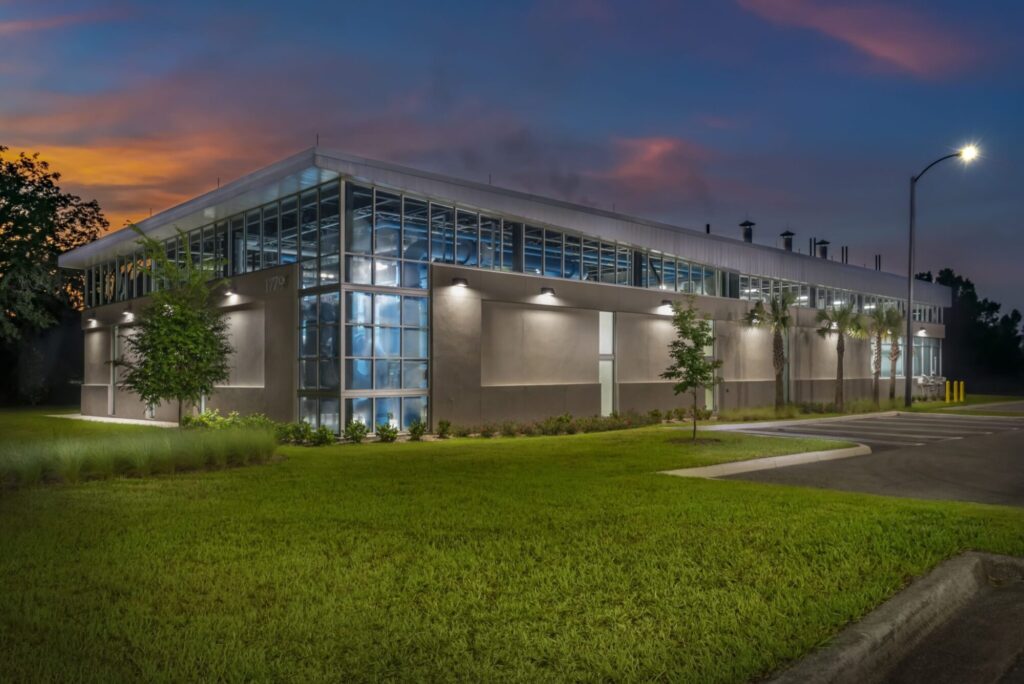As we celebrate Earth Month, we’re reminded of our power—and responsibility—to create buildings that serve communities in sustainable, impactful ways. As architects, we help shape the world around us. Now more than ever, this means finding innovative solutions to global challenges like climate change and resource depletion. But that doesn’t mean sacrificing beauty or practicality. We believe sustainability and aesthetics can—and should—go hand in hand.
Agile Design: A Focus on Flexibility, Well-Being, Accessibility, and Environmental Impact
Our Agile Design approach balances flexibility, well-being, accessibility, and environmental impact. We incorporate features like ample natural lighting, healthy indoor air quality, and versatile spaces that can seamlessly evolve alongside our clients’ needs. By integrating sustainable materials and energy-efficient systems from the start, we build with both current and future needs in mind.
Case Study: The Student Healthcare Center at the University of Florida

The Student Healthcare Center at the University of Florida - WELL Gold Certified
UF’s Student Healthcare Center exemplifies our Agile Design philosophy. We engineered the structure to grow vertically rather than expand outward, conserving green space and reducing construction impact while allowing the University to adapt to changing demands. The Student Healthcare Center has achieved WELL Gold certification—an internationally recognized standard dedicated to human health and well-being. By incorporating concepts like biophilic design, ergonomics, and healthy indoor environments, the Center provides a welcoming space where students can thrive.
Spotlight: The Malachowsky Data Sciences Building at the University of Florida

Malachowsky Hall for Data Science & Information Technology - Leed Platinum
Another standout is the Malachowsky Data Sciences Building, created with Bohlin Cywinski Jackson (BCJ) to advance UF’s leadership in AI and data science. This groundbreaking facility seamlessly blends sustainability, adaptability, and collaboration, earning LEED Platinum certification, as well as multiple awards and national recognition. One of the most innovative features is the use of photoreactive glass that dynamically responds
to sunlight, reducing energy consumption and creating a more comfortable environment inside.
Adaptive Reuse: Preserving History, Reducing Waste
Sustainability goes beyond building new. At Walker Architects, we’re champions of adaptive reuse—repurposing existing structures to preserve their historical character and reduce waste. By transforming older buildings to meet modern needs, we extend their life cycle, minimize our carbon footprint, and celebrate each structure’s unique story. This strategy honors a building’s heritage while providing fresh and accessible spaces for communities.
Designing for People and the Planet
Sustainable design inherently supports human well-being. By focusing on adaptability, health, and resource efficiency, our projects nurture communities and respect the environment. This Earth Month, we invite you to join us in building a greener, more inspiring future. Through Agile Design, we can create places that uplift people, safeguard the planet, and stand the test of time.


No comments.